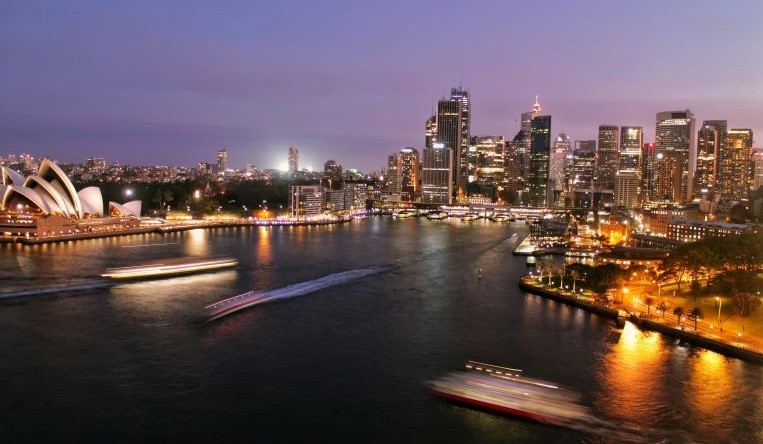Copyright not the focus of Aussie legislation for digital platforms to pay for news content
23 October 2024

The focus of Australia’s News Media Bargaining Code (NMBC) has not been on copyright, according to Harry Melkonian, attorney-at-law at Melkonian & Co. in Sydney.
Enacted on February 25, 2021, the NMBC is a law directing large technology platforms operating in Australia to pay local news outfits for the use of the latter’s content – whether it is outright available in the platform or accessed via linking.
Melkonian was speaking at the webinar “News Publishers vs. Digital Platforms: New Laws to Bridge the Value Gap to Safeguard Journalistic Standards” held on October 3, 2024. The webinar discussed the “value gap” in revenue between news publishers and global technology enterprises like Google and Facebook. It delved into the problems news outfits face due to this gap in an era where information flows freely online and publishers receive no compensation for the news content they churn out, which is eventually used by these platforms. One of the questions tackled in the webinar was whether copyright has a role in protecting the standards of journalism and democracy.
The EU and some other countries have enacted laws to help solve this problem and ensure fair compensation for quality journalism. One of these countries is Australia, where the idea of coming up with such legislation garnered support from Parliament but faced strong opposition from Google and Facebook.

Harry Melkonian | Attorney-at-law @ Melkonian & Co., Sydney
“As for the question ‘Where does copyright fit in this?’ it’s a somewhat difficult question because, to a certain degree, it does not, to the extent of just information,” said Melkonian. “We have another situation that has developed wherein the large platforms have said that ‘We will deprecate the news’ – that’s a fancy word for saying, ‘We will block the news.’ If it were a copyright issue, media organizations might be saying, ‘You won’t show the news. It belongs to us,’ but they’ll say, ‘No, this is worse. By not showing our content, you’re making our lives worse because we rely on the internet, and our consumers rely on the internet.’ And so copyright is, from our standpoint, not a good way to approach this,” he explained.
The Australian government’s main concern, he said, is to maintain the solvency of local journalism.
He explained that the population of Australia, which has a land mass about the same size as that of the United States minus Alaska, is approximately 27 million. A huge percentage of this population lives in several large cities. This leaves a vast expanse of regions in the country with very small towns. Thus, large city broadcasters and newspapers and much smaller entities in the rural areas make up Australia’s unusual media landscape.
“Many of our news outlets – because of the small population – are quite small, and as they lose advertising revenue, they become economically unviable. What the government is trying to do is to find some way to require the platforms to, in a sense, transfer some of that advertising revenue to the traditional journalist organizations to maintain their solvency and survivability,” Melkonian said.
However, the Australian legislation has been on a voluntary basis. “The way the legislation is worded is that the digital platforms and journalists should negotiate arrangements, which they did in 2021. And failing that, the government can force parties into arbitration, but it’s never done that. But we’re reaching a point where the big platforms have said, ‘We are not renewing our arrangements to pay the journalists and media organizations because we don’t think it’s worth it,’” he revealed. A lot of these agreements will be terminated in 2024.
He added that the government recognizes the problem yet has not taken any steps to force any party into arbitration.
Asked about his advice to any government contemplating such legislation, Melkonian compared present-day problems arising from the value gap between big tech platforms and news publishers to the dilemma faced by newspapers in the early part of the 20th century. Then, publishing firms complained about their news stories being read on air via radio stations. By doing this, the radio stations were raking in advertising revenues that were supposed to be flowing into the newspapers’ coffers instead.
“The situation eventually solved itself because the radio stations built their own newsrooms so journalism actually increased,” he related.
The cycle repeated itself with the emergence of television in the middle of the 20th century.
“What I would like to see is that some of these large platforms start building their own journalism so that we actually will increase the amount of journalism,” Melkonian answered the question. “It’s just that everything has happened so fast with the internet and they do act a bit like pirates sometimes, flying their own flag. I think this legislation forced a level of fairness so I think we are moving in the right direction.”
George Hwang, director of George Hwang LLC in Singapore and chair of the Copyright Committee for the Licensing Executives Society International, served as moderator at the webinar.
- Espie Angelica A. de Leon






